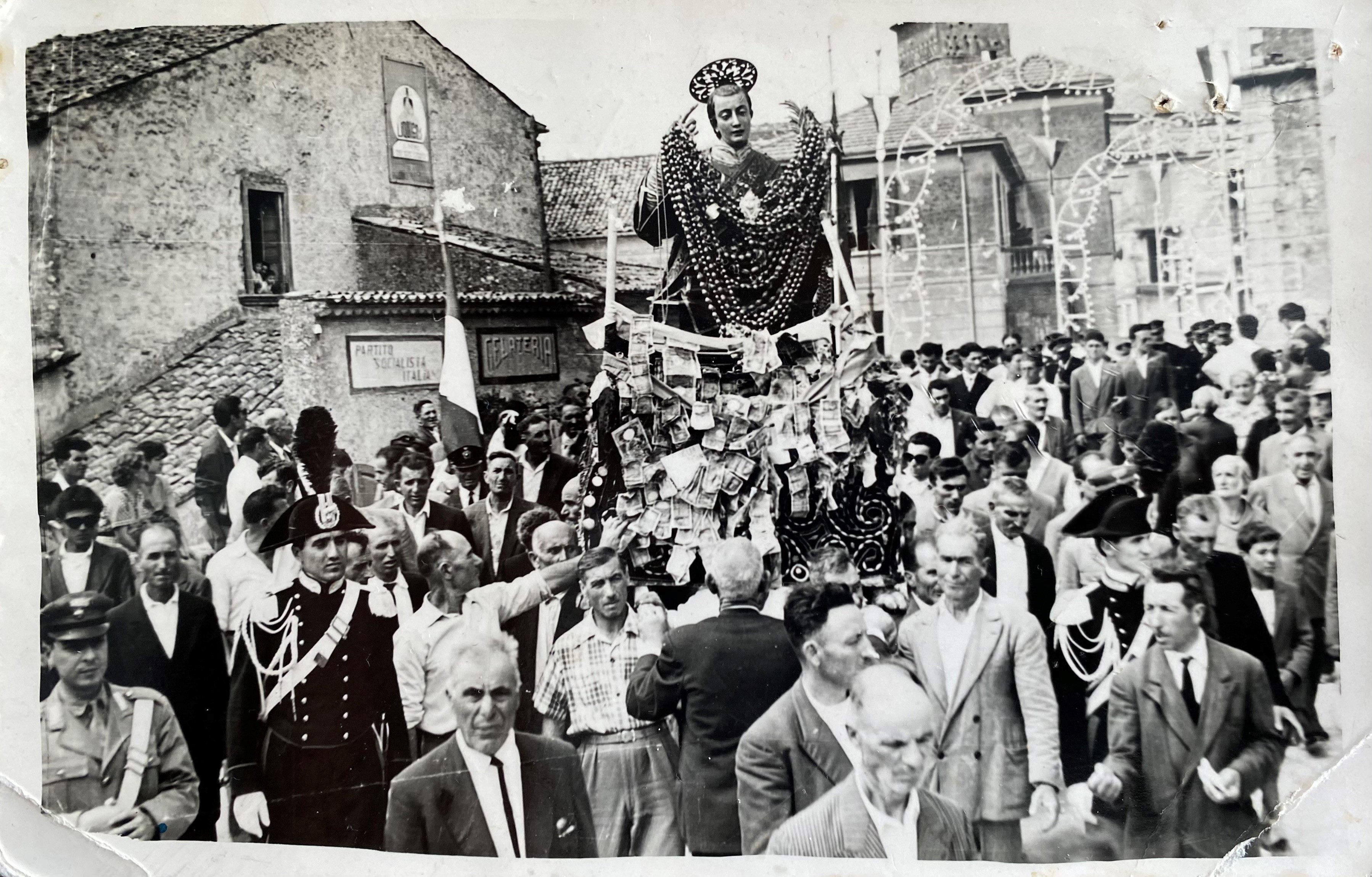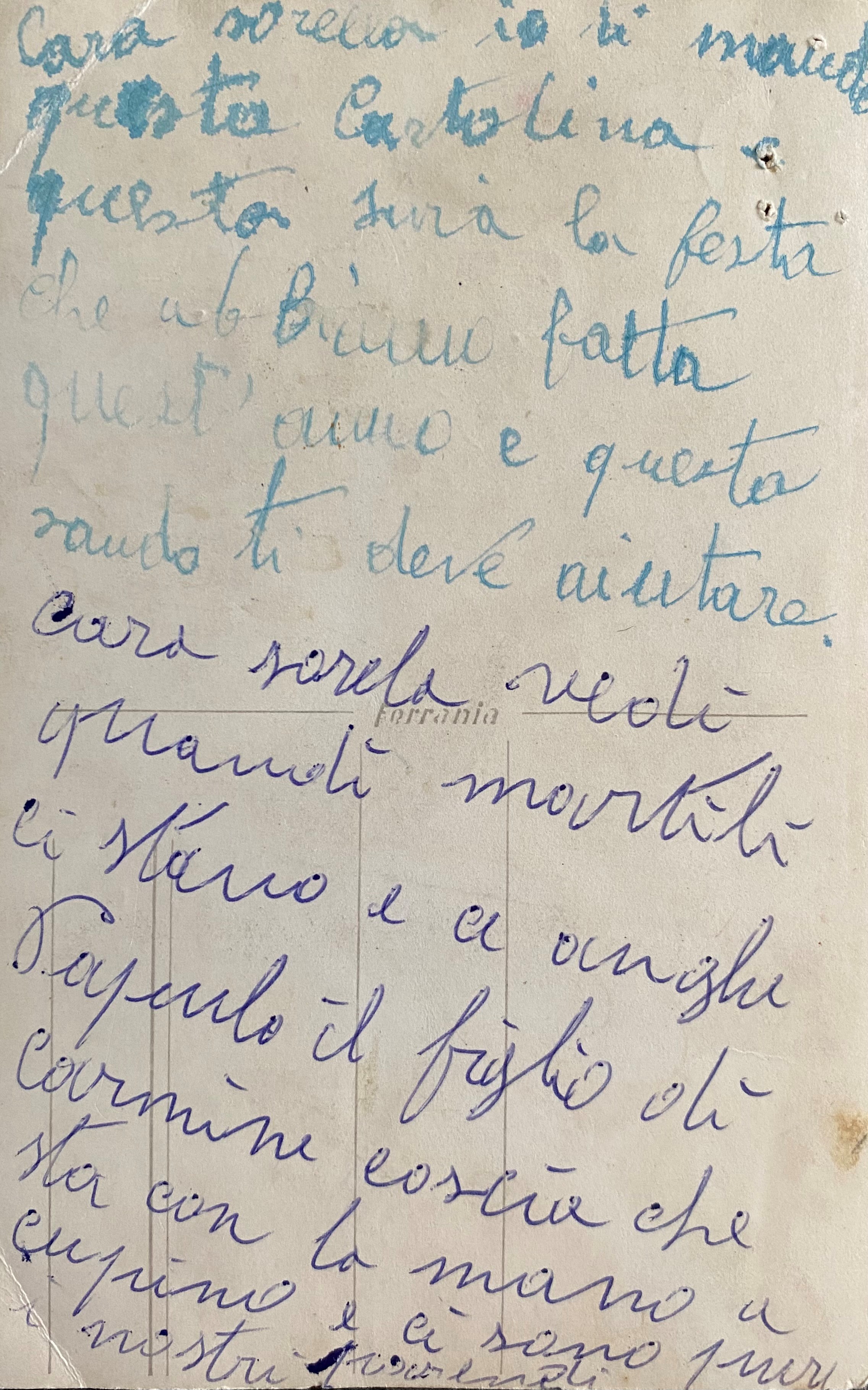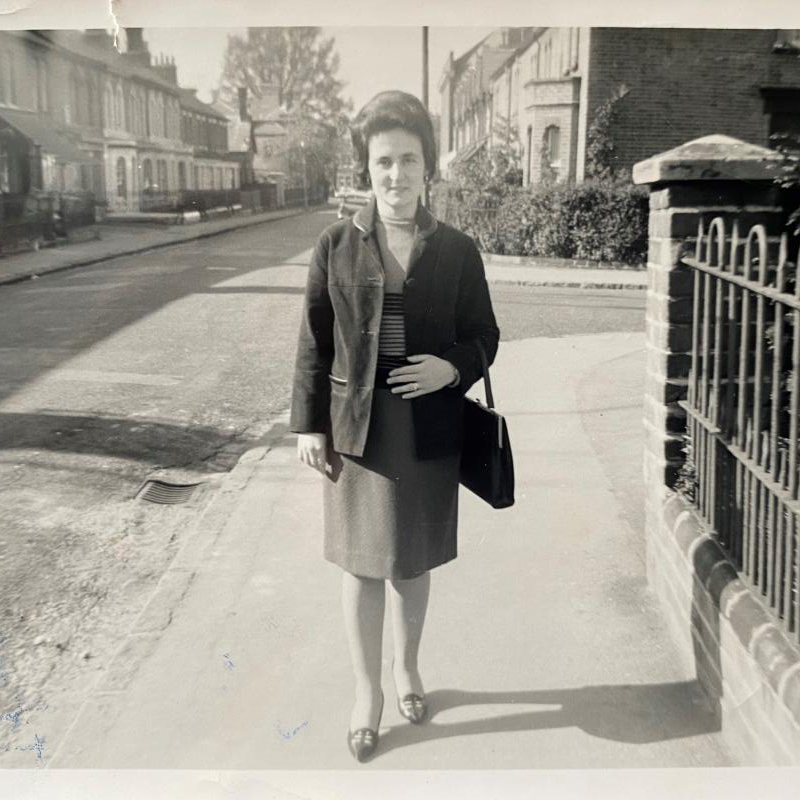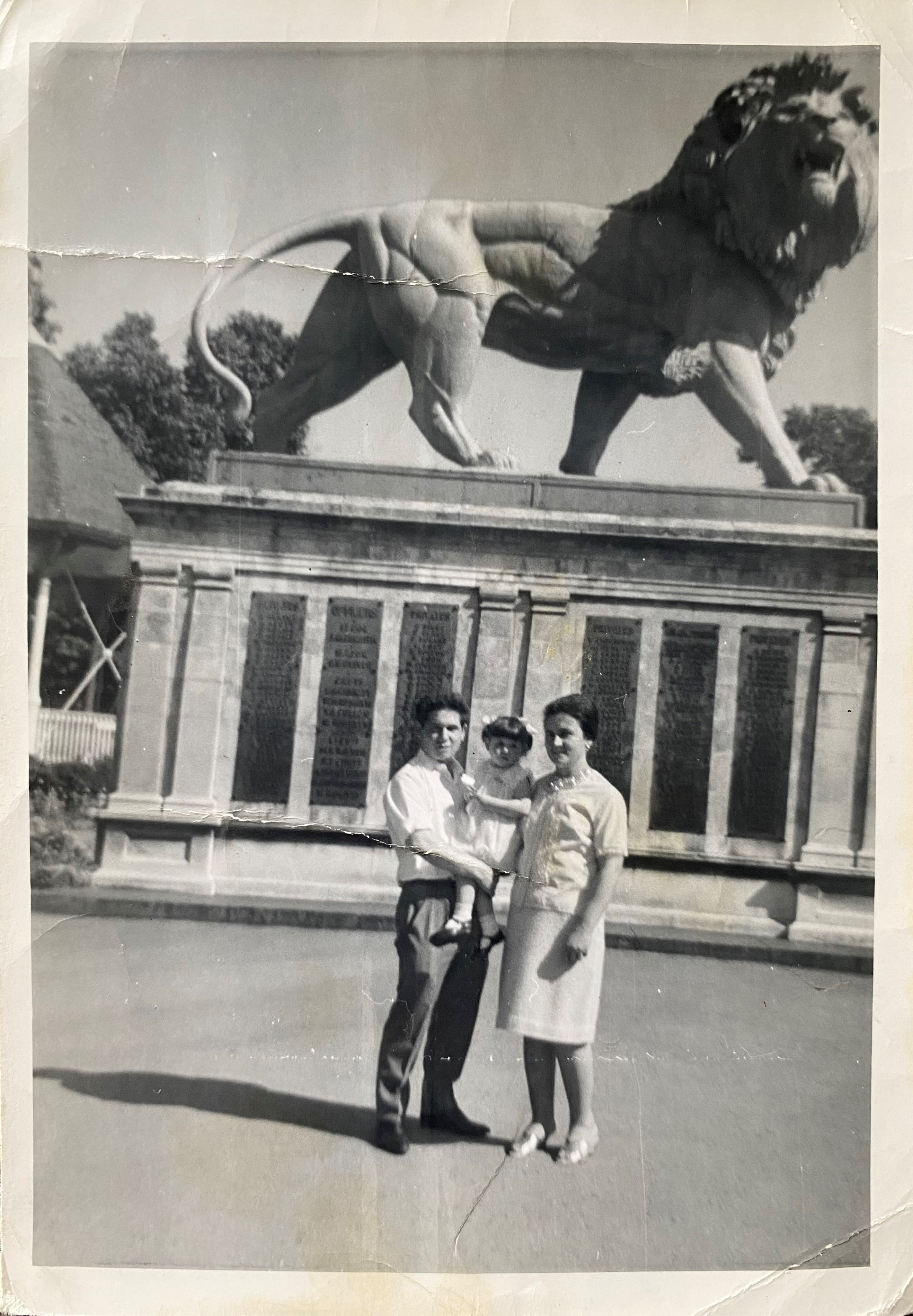When leaving Italy, many migrants often travelled alone. Letters and letter writing became an important way of keeping in contact with family, friends and events in Italy.
Most Italian migrants who arrived in Reading after the Second World War wrote to relatives in Italy twice a month. Their relatives would often respond with letters or postcards depicting events happening in the town. This provided Reading’s Italians with a little bit of home.
The procession of San Ciriaco: a postcard
This postcard captures the procession of San Ciriaco. It shows the town coming together to celebrate his feast day on the 8 August. This postcard was sent from a family in Torre Le Nocelle, Italy, to one of their relatives in Reading.


The back of the postcard reads:
Dear Sister,
I am sending you this card and this festival that we did this year and this saint will protect you. Dear sister, look at how many martyrs there are. This is also Pasquale, the son of Carmine Coscia, who has his hand cupped. There are even our family members.
It was important to family members in Italy that their relatives abroad did not lose their ‘Italianness’ whilst living away from home. These postcards allowed Italian migrants to express their local as well as their national identity in Reading whilst keeping in contact with their family too.
The significance of letter writing
Recently, historians of other migrant groups have highlighted the importance of letter writing within migrant communities as a way of keeping in contact with loved ones back home.
However, letter writing amongst Italian migrants was not the private activity it is commonly thought to be. Most of Reading’s Italian community arrived from Southern Italy. Education in the South was very poor and often incomplete. As many left school at a young age to work on farms, few could read or write in Italian properly. These individuals asked literate Italians to write their letters for them. These ‘scribes’ suddenly became very important members within the migrant community as they connected Reading’s illiterate Italians with their family back home.
This also applied to English. Those who understood English very well became key members of the community and saw their prestige rise.
There were friends who did not really grasp English as well as my parents did, so they struggled with banking or utilities [...] quite often my dad would be the one who his Italian friends would bring their paperwork to [...] my dad was very good at understanding stuff like that.
- Ciriaco
The contents of these letters often provide a rare and precious glimpse into the ways migrants experienced and perceived the radically changing British society and culture of the 1960s.
Antonietta wrote to her sister in Italy twice a month, often expressing her surprise at Reading life. Given her very traditional, Catholic upbringing, Antonietta was shocked by English behaviours and how religion and its traditions seemed less strictly enforced.
I could see people cuddling each other and kissing each other on the road and I said to myself, “What’s wrong with these people? We were not allowed to do that in Italy”. It was so funny. It was a different world here. People would not have believed that they were kissing each other before they got married.
- Antonietta
By informing family members of what surprised them and what was different about their new home, migrants ‘introduced’ new conventions and ideas to their home towns in Italy.
Photographs became another way of keeping in contact with family back home. For those Italians who had a camera, some photos were kept in the family album while others were posted to Italy so relatives could see their new home.

Sabatina on De Beauvoir Road.

Italian migrants soaking up the sun in the Forbury Gardens.
The arrival of the telephone
As technology progressed, letters were replaced with telephone boxes.
In 1951, only 7% of Italian families had electricity so very few Italians had phones. Italians in Reading had to ring neighbours to speak to family back home.
Some neighbours had a phone indoors. I rang the neighbour and said, “At this time, please can you tell my dad to come to your house so I can speak to him?"
- Antonietta
While expensive and sometimes unsuccessful, phone boxes allowed Italians to reconnect, often after months or years without hearing each other’s voices. Speaking in regional dialects also allowed Italians to express their local identity without mediators.
Keeping in touch today
Today, the development of new technologies has again changed how Italians in Reading keep in contact with their loved ones back home. This change has been embraced by all generations. Antonietta and Pietro went to school using black boards and chalk. They were initially unsure what benefits the internet and smart devices could bring. Now they video call their loved ones in Italy every day for hours at a time.
Since they first arrived after the Second World War, different generations of Italian migrants have employed different means to keep in contact with friends and relatives in Italy. The evolution of technology has made this contact even easier and paradoxically has strengthened their ties with ‘home’.
As the years have passed by, it seems that Italy, its provinces and the relatives who live there have grown closer, not farther, away.





